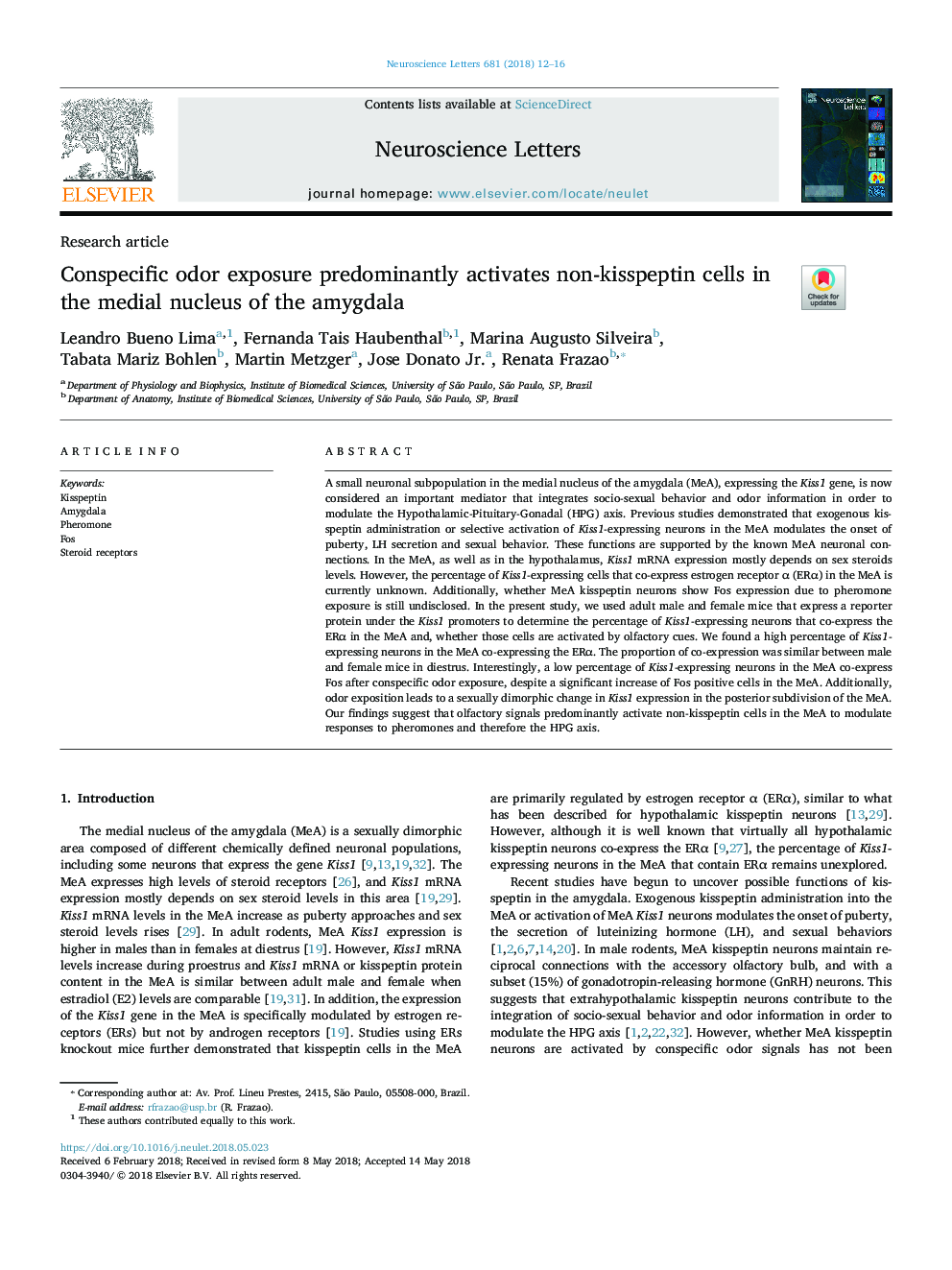| کد مقاله | کد نشریه | سال انتشار | مقاله انگلیسی | نسخه تمام متن |
|---|---|---|---|---|
| 8841418 | 1615018 | 2018 | 5 صفحه PDF | دانلود رایگان |
عنوان انگلیسی مقاله ISI
Conspecific odor exposure predominantly activates non-kisspeptin cells in the medial nucleus of the amygdala
ترجمه فارسی عنوان
قرار گرفتن در معرض غوطه وری غلیظ، عمدتا سلول های غیر کیسپپتین را در هسته مرکزی آمیگدال فعال می کند
دانلود مقاله + سفارش ترجمه
دانلود مقاله ISI انگلیسی
رایگان برای ایرانیان
کلمات کلیدی
موضوعات مرتبط
علوم زیستی و بیوفناوری
علم عصب شناسی
علوم اعصاب (عمومی)
چکیده انگلیسی
A small neuronal subpopulation in the medial nucleus of the amygdala (MeA), expressing the Kiss1 gene, is now considered an important mediator that integrates socio-sexual behavior and odor information in order to modulate the Hypothalamic-Pituitary-Gonadal (HPG) axis. Previous studies demonstrated that exogenous kisspeptin administration or selective activation of Kiss1-expressing neurons in the MeA modulates the onset of puberty, LH secretion and sexual behavior. These functions are supported by the known MeA neuronal connections. In the MeA, as well as in the hypothalamus, Kiss1 mRNA expression mostly depends on sex steroids levels. However, the percentage of Kiss1-expressing cells that co-express estrogen receptor α (ERα) in the MeA is currently unknown. Additionally, whether MeA kisspeptin neurons show Fos expression due to pheromone exposure is still undisclosed. In the present study, we used adult male and female mice that express a reporter protein under the Kiss1 promoters to determine the percentage of Kiss1-expressing neurons that co-express the ERα in the MeA and, whether those cells are activated by olfactory cues. We found a high percentage of Kiss1-expressing neurons in the MeA co-expressing the ERα. The proportion of co-expression was similar between male and female mice in diestrus. Interestingly, a low percentage of Kiss1-expressing neurons in the MeA co-express Fos after conspecific odor exposure, despite a significant increase of Fos positive cells in the MeA. Additionally, odor exposition leads to a sexually dimorphic change in Kiss1 expression in the posterior subdivision of the MeA. Our findings suggest that olfactory signals predominantly activate non-kisspeptin cells in the MeA to modulate responses to pheromones and therefore the HPG axis.
ناشر
Database: Elsevier - ScienceDirect (ساینس دایرکت)
Journal: Neuroscience Letters - Volume 681, 10 August 2018, Pages 12-16
Journal: Neuroscience Letters - Volume 681, 10 August 2018, Pages 12-16
نویسندگان
Leandro Bueno Lima, Fernanda Tais Haubenthal, Marina Augusto Silveira, Tabata Mariz Bohlen, Martin Metzger, Jose Jr., Renata Frazao,
